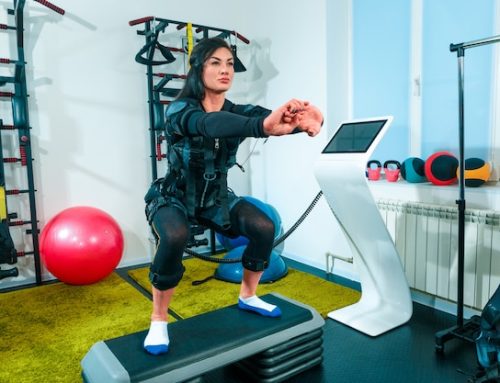Introduction
High-Intensity Interval Training (HIIT) is an efficient workout method that has gained immense popularity in recent years. It involves short bursts of intense exercise followed by short periods of active rest or complete rest. HIIT has been shown to produce significant results in a short amount of time, making it an appealing workout method for busy individuals who want to maximize their time in the gym.
However, there has been a lot of debate as to whether HIIT is more cardio or strength training. In this article, we will explore the benefits of HIIT and how it can be used to target both cardio and strength.
What is HIIT?
HIIT involves short bursts of intense exercise that raises your heart rate and burns more calories than traditional cardio exercise. It requires maximum effort during the intense periods of exercise, followed by a short period of recovery or rest. The cycle is then repeated several times to complete a workout session.
According to the American Council on Exercise, HIIT can be done in various ways, including running, cycling, jumping rope, or bodyweight exercises like burpees, jumping jacks, and mountain climbers.
Benefits of HIIT
HIIT has been shown to offer numerous benefits to individuals who incorporate it into their workout routine. One of the primary benefits of HIIT is its time efficiency. Since it involves short bursts of exercise, it can be completed within a shorter time frame than traditional cardio exercises.
HIIT has also been shown to increase metabolic rate, which helps burn more calories hours after finishing a workout. It can also improve cardiovascular health by strengthening the heart and lungs, reducing the risk of heart disease.
Moreover, HIIT can also improve insulin sensitivity, which helps regulate blood sugar levels, reducing the risk of diabetes. Additionally, HIIT has been shown to improve muscle strength, endurance, and overall fitness level.
HIIT for Cardio
HIIT has been shown to improve cardiovascular fitness due to its ability to elevate heart rate during intense exercise periods. Studies have shown that HIIT can lead to similar cardiovascular benefits as steady-state cardio exercise, but within a shorter time frame.
One study published in the Journal of Obesity found that HIIT improves maximal oxygen uptake (VO2max), which is a crucial measure of aerobic fitness. VO2max is the maximum amount of oxygen the body can utilize during exercise, indicating the level of cardiorespiratory fitness.
HIIT for Strength
While HIIT primarily involves cardio exercise, it can also be used to target strength. Researchers have found that HIIT can lead to improvements in muscle strength and endurance, particularly when it involves bodyweight exercises like squats, lunges, and push-ups.
One study published in the Journal of Strength and Conditioning Research found that HIIT could improve lower-body strength as effectively as traditional strength training. The study involved participants performing bodyweight exercises like squats, lunges, and step-ups in a HIIT format.
HIIT for Weight Loss
HIIT has been shown to be an effective method for weight loss due to its ability to burn more calories than steady-state cardio. According to the American Council on Exercise, HIIT can burn up to 30% more calories than steady-state cardio exercise.
HIIT also has a greater effect on the body’s metabolic rate, which helps burn more calories even after the workout is over. This is due to the “afterburn effect,” where the body continues to burn calories even during rest periods after the workout.
Conclusion
In conclusion, HIIT can be used to target both cardio and strength training. It offers numerous benefits, including time efficiency, increased metabolic rate, and improved cardiovascular and muscular health.
While HIIT is primarily cardio-focused, it can also be used to target strength through bodyweight exercises. Additionally, HIIT is an effective method for weight loss, as it burns more calories than steady-state cardio and increases metabolic rate.
Whether you’re looking to improve cardio or strength, HIIT can be an effective method to incorporate into your workout routine, providing numerous benefits in a shorter amount of time.
| Pros | Cons |
|---|---|
| Time efficiency | Intense workouts may not be suitable for everyone |
| Increased metabolic rate | Risk of injury if not done correctly |
| Improved cardiovascular health | May not be suitable for individuals with certain medical conditions |
| Improved muscle strength and endurance | Requires maximum effort during intense periods, which can be challenging |
| Effective for weight loss | Requires proper warm-up and cool-down to reduce the risk of injury |






